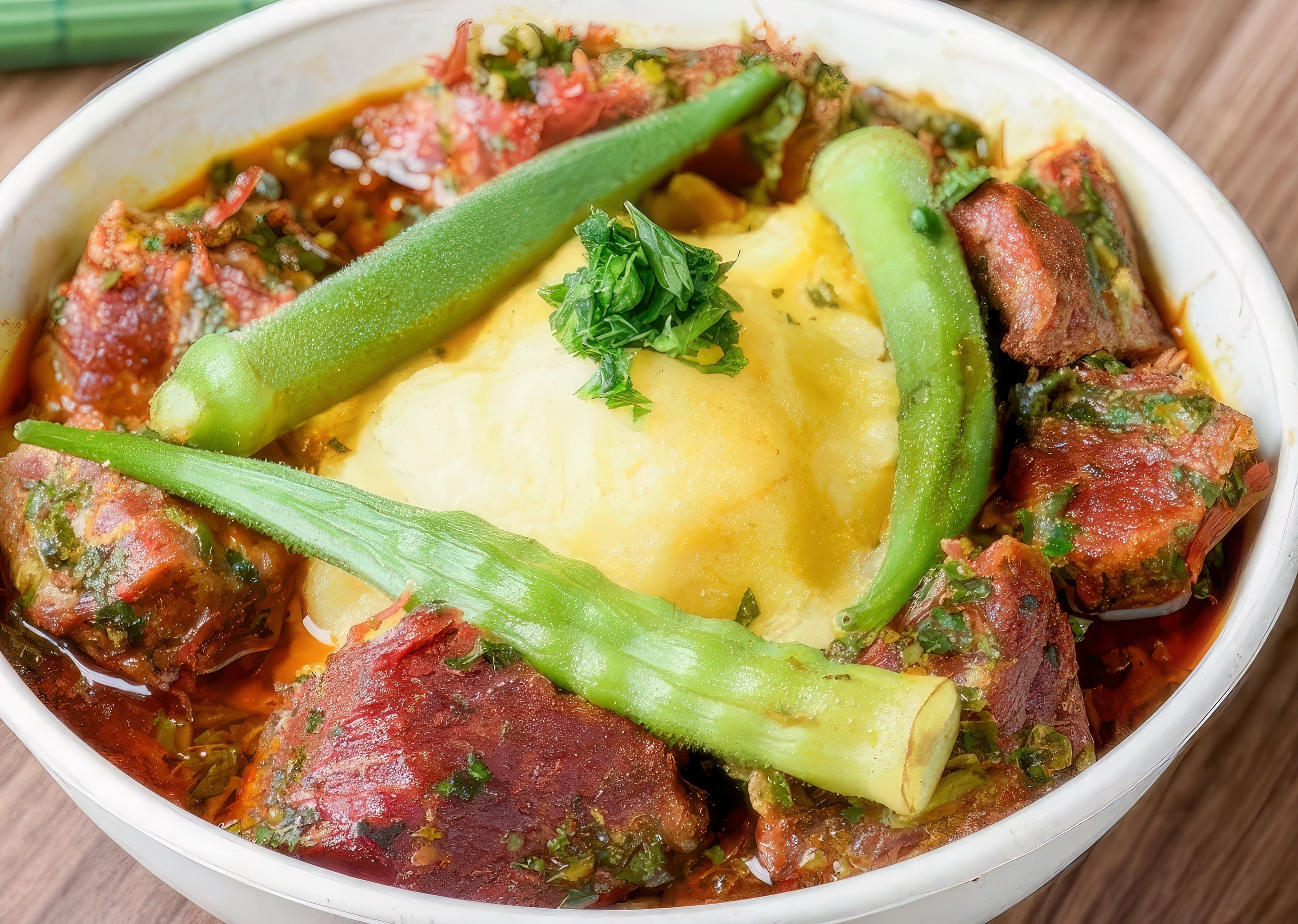Last updated on October 6th, 2023 at 02:35 pm

Calulu, the national dish of São Tomé & Principe, is a culinary delight that tells a story. It’s a tale of tradition, culture, and history woven into every bite. This hearty stew is more than just food—it’s an experience.
Our team at Remitly created this guide as part of our series that celebrates the traditional foods of our global customers.
The Origins of Calulu
The roots of Calulu trace back to the indigenous people of São Tomé & Principe. They crafted this dish using local ingredients and traditional cooking methods. Over time, it evolved into what we know today—a flavorful stew that reflects the island nation’s rich cultural heritage.
Portuguese colonizers also influenced Calulu. Their arrival brought new ingredients and cooking techniques that were incorporated into the dish. Despite these changes, Calulu has remained true to its origins—simple yet satisfying.
Ingredients Used in Calulu
Calulu is known for its robust flavors derived from various ingredients. Fish or meat forms the base—often dried for added depth of flavor. Vegetables like okra, eggplant, and spinach add color and nutrition.
Palm oil gives Calulu its distinctive taste, while chili peppers provide heat. Garlic and onions lend their aromatic qualities to the mix. Each ingredient plays a crucial role in creating this well-loved dish.
Making Calulu involves several steps, but it’s worth every minute spent in the kitchen. First, you soak the dried fish or meat to rehydrate it before cooking begins.
Next comes sautéing garlic and onions in palm oil until they’re fragrant—a process that sets the flavor foundation for the stew. Then you add vegetables along with soaked fish or meat to simmer until tender.
Finally, you season with salt and chili peppers for that signature kick—creating a meal that warms both body and soul.
Recipe for Calulu
Calulu is a dish that requires patience and love. Here’s a simple recipe to help you recreate this São Tomé & Principe classic at home.
Ingredients:
- 500g of dried fish or meat
- 2 onions, chopped
- 3 cloves of garlic, minced
- 1 cup of palm oil
- 1 bunch of spinach, washed and chopped
- 2 eggplants, diced
- A handful of okra, sliced
- Salt to taste
- Chili peppers to taste
Instructions:
- Soak the dried fish or meat in water overnight to rehydrate it.
- Heat the palm oil in a large pot over medium heat.
- Add the onions and garlic to the pot and sauté until they’re fragrant.
- Drain the soaked fish or meat and add it to the pot.
- Add the spinach, eggplants, and okra into the pot.
- Season with salt and chili peppers according to your preference.
- Cover the pot and let it simmer on low heat for about an hour until everything is tender.
- Serve your Calulu hot with rice or funge.
Variations of Calulu
While there’s a standard recipe for making Calulu, variations exist across São Tomé & Principe. Some regions prefer using fresh fish or meat instead of dried. Others add different vegetables based on what’s locally available.
These variations reflect the diversity of the islands’ geography and culture. They’re a testament to how food can adapt and evolve while still retaining its essence.
Serving and Eating Etiquette
Calulu is typically served with rice or funge—a type of cornmeal porridge. It’s eaten family-style, with everyone gathered around a communal pot.
Eating etiquette involves using your right hand to scoop up the stew along with some rice or funge. Sharing a meal in this way fosters a sense of community—a value deeply ingrained in São Tomé & Principe’s culture.
Popular Pairings with Calulu
While Calulu is delicious on its own, it pairs well with other dishes too. A side of fried plantains adds sweetness that complements the stew’s savory flavors.
For those who enjoy a bit of tang, pickled vegetables make an excellent accompaniment. And if you’re looking for something refreshing, try pairing Calulu with a glass of palm wine—an indigenous beverage often enjoyed alongside meals.
Influence of Portuguese Cuisine
Portuguese cuisine has left an indelible mark on Calulu. The use of dried fish or meat is one such influence—inspired by Portugal’s love for bacalhau (dried cod).
The addition of chili peppers also traces back to Portuguese explorers.
More about the Cuisine of São Tomé & Principe
São Tomé & Principe’s cuisine reflects its diverse cultural influences and abundant natural resources.
Seafood Dishes
Being an island nation, seafood plays a significant role in local cuisine. Fish is often grilled or stewed with various spices—creating dishes that are both flavorful and nutritious.
Plant-Based Foods
Vegetables like okra, eggplant, spinach are commonly used in many dishes—not just Calulu. They’re often cooked with palm oil—a staple ingredient that adds richness to meals.
Fruits
The islands’ tropical climate allows for a wide variety of fruits like bananas, papayas, pineapples, and avocados. These fruits are enjoyed fresh or used in desserts and beverages.
Beverages
Palm wine is a popular traditional beverage often served with meals. Coffee, another significant crop, is also widely consumed—reflecting the islands’ Portuguese influence.
Desserts
Sweet treats are a beloved part of São Tomé & Principe’s cuisine. Arroz doce (sweet rice pudding) and pudim de papaia (papaya pudding) are two examples of local desserts that satisfy the sweet tooth.
Visit the homepage, download our app, or check out our Help Center to get started.
